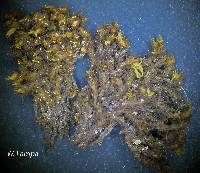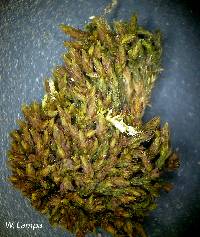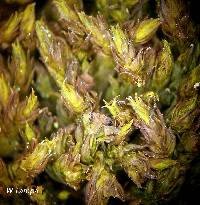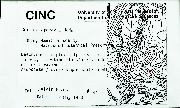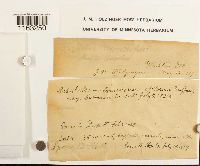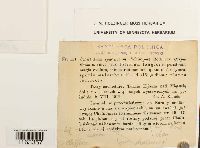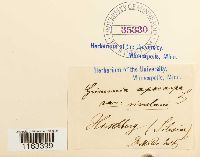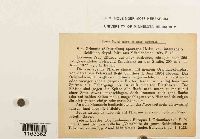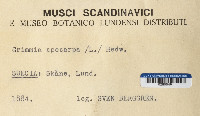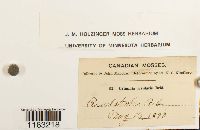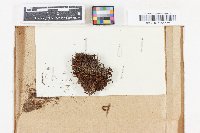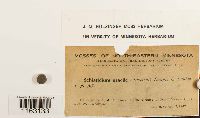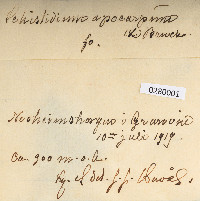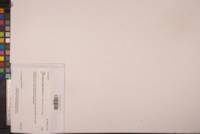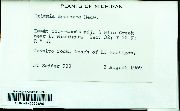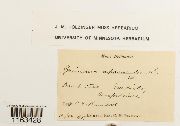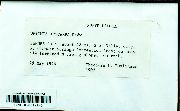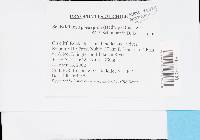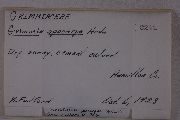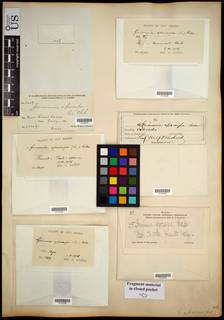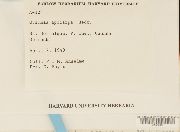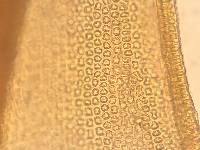
Consortium of Bryophyte Herbaria
- building a Consortium of Bryophytes and Lichens as keystones of cryptobiotic communities -
|
|
|
|
Family: Grimmiaceae
schistidium moss
[Anictangium nervosum (P. Beauv.) Brid., moreAnoectangium nervosum (P. Beauv.) Schwägr., Apocarpum commune P. Beauv., Barbula albicuspis (Röhl.) Meyl., Barbula chlorophana (Röhl.) Meyl., Bryum apocarpum (Hedw.) With., Didymodon albicuspis (Mitt.) Broth., Grimmia apocarpa (Hedw.) Bruch & Schimp., Grimmia apocarpa f. tenerrima (Nees & Hornsch.) Chal., Grimmia apocarpa var. apocarpa , Grimmia apocarpa var. chlorophana (Stirt.) Dixon, Grimmia apocarpa var. fasciculata (Brid.) Brid., Grimmia apocarpa var. obscuroviridis Crum, Grimmia apocarpa var. schleicheri (Spreng.) Brid., Grimmia apocarpa var. tenerrima Nees & Hornsch. in Nees et al., Grimmia diversifolia Kindb., Grimmia fasciculata Brid., Grimmia gracilis var. chlorophana (Stirt.) Dixon, Grimmia schleicheri Spreng., Hedwigia nervosa P. Beauv., Orthotrichum fasciculatum (Brid.) Brid., Orthotrichum nipponense Nog., Schistidium alpicola var. dupretii (Thér.) Crum, Schistidium apocarpum subsp. apocarpum , Schistidium apocarpum subsp. tenerrimum (Nees & Hornsch.) J.J. Amann, Schistidium apocarpum var. ambiguum (Sull.) G. Jones in Grout, Schistidium apocarpum var. apocarpum , Schistidium apocarpum var. strictum (Turn.) Moore, Schistidium apocarpum var. tenerrimum (Nees & Hornsch.) Limpr., Schistidium dominii Vilh., Schistidium nervosum (P. Beauv.) Brid., Schistidium nodulosum Stirt., Schistidium tenerrimum (Ren. & Card.) G. Roth, Weissia apocarpa (Hedw.) Poir.] |
Plants: in open tufts or mats, olivaceous to brownish (black), sometimes with yellowish tones. Stems: 1.2–12 cm, central strand weak or absent. Leaves: erect or curved, rarely (falcate-) secund when dry, ovate-lanceolate, sharply keeled distally, (1.3–)1.7–2.5(–3.2) mm, 1-stratose or rarely 2-stratose in striae distally; margins usually recurved throughout or to just before the apex, usually denticulate distally, 1 or 2-stratose; apices acute or sub-obtuse; costa percurrent or excurrent as a smooth or weakly denticulate, occasionally decurrent awn, abaxial surface often papillose; basal marginal cells usually quadrate; distal laminal cells mostly short-rectangular, 8–10 µm wide, smooth, sinuose. Sexual: condition autoicous. Capsule: dark red or brown, short-cylindric, 0.7–1.3 mm; exothecial cells usually quadrate, sometimes mixed with short-elongate or oblate cells, thin-walled, usually trigonous; stomata present; peristome patent or erect, often twisted, 350–600(–700) µm, red, densely papillose, usually perforated. Spores: 11–14(–19) µm, granulose or smooth. Phenology: Capsules mature late spring to early summer. Rocks in somewhat shaded habitats. low to moderate elevations (0-1500 m). Greenland, Alta., B.C., N.B., Nfld. and Labr. (Nfld.), N.S., Ont., Que., Alaska, Mich., N.Y., Vt., Wash., Wis., Eurasia. Although H. H. Blom (1996) considered Schistidium apocarpum to be restricted in the flora area to the eastern portions of North America, it is more widespread and scattered across the continent. The denticulate leaf margins, papillose abaxial costal surface, short-cylindrical capsules, and the thin-walled, often evenly quadrate exothecial cells are distinguishing characters. The long peristome teeth are also useful in identifying S. apocarpum. In good condition the peristome can only be confused with that of S. trichodon, which differs in the darker, often black color of its plants, the peristome teeth often forming a dome, and the cylindrical capsules that retain the columella. |
Powered by Symbiota.




